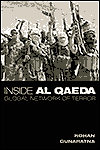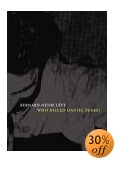|
|
The Enemy Within
Kanchan Lakshman
Even as its military regime comes to terms with the global fallout of
the country's role in nuclear proliferation, Pakistan was once again
rocked by radical Islamist violence. At least 47 persons are reported to
have died and more than 150 sustained injuries when a procession of the
Shia sect was attacked by rival Sunni extremists at Liaquat Bazaar in
Quetta, capital of Baluchistan, on March 2, 2004. President Pervez
Musharraf's call for an 'enlightened moderation' in Pakistan is, if
events in the past few months are any indication, threatened by the very
forces that have long been nurtured by successive regimes in the
country. Recurrent Islamist violence, it appears, will remain a
significant element in the churning process within Pakistan in the
proximate future.
Over the past nine months, Quetta has witnessed a number of lethal
incidents of sectarian violence. Among the most serious was the June 8,
2003, incident, when thirteen trainee police personnel belonging to the
local Hazara community of the Shia sect were killed during an attack in
the Sariab Road area. And on July 4, 2003, at least 53 persons were
killed and 57 others wounded as three armed terrorists, including a
suspected suicide bomber, stormed a Shia mosque during Friday prayers.
The latest Quetta attacks also coincided with the explosions in the
Iraqi cities of Baghdad and Karbala, which left nearly 200 dead. These
attacks also targeted Shias, who were observing Youm-i-Ashur, the
10th day of Muharram (the annual Shia commemoration of the martyrdom of
Imam Hussein, the grandson of Prophet Mohammad). Although direct
linkages between these two incidents are yet to be established, there is
a definite pattern of association among the various theatres of jehad
across the globe. The spread of disorder and violence are currently
being orchestrated by the same forces whose ideological worldview
supplements the essential logic and dynamic of their operations.
The near simultaneous attacks at Karbala, Baghdad and Quetta are a clear
indication that the Iraq trajectory is crucial. The failure of the US to
'manage the peace' in Iraq and continuing instability in Afghanistan,
along with a considerably stretched troop commitment by the United
States during an election year, will have critical impact on the future
of terrorism in general. No strangers to the advantages of guerilla
warfare, warriors of the global jehad are currently seeking to
harness the operational possibilities created by the "target-rich
environment" in Iraq. A truly global jehadi enterprise will be
quick to seize the chances of escalation in the immediate future, and
the Muharram incidents are portents of troubles to come.
Subsequent to an attempt on his life on December 14, 2003, General
Musharraf had stated that the security of Pakistan was threatened more
from within than by outside forces. Pakistan has witnessed a long
history of violence between the Sunni and minority Shiite sects (Sunnis
constitute approximately 77 per cent of the population and Shias, 20 per
cent), most of which has been perpetrated by groups that emerged in the
1980s during General Zia-ul-Haq's rule. Between 1989 and 2004 (till
March 5), at least 1,531 people have been killed and 3,572 wounded in
1,822 incidents of sectarian violence by these homegrown jehadis
in Pakistan.
A deeper scrutiny of the sectarian trajectory in Pakistan indicates
patterns of uncertainty as well as resilience. There are, indeed,
periods of apparent calm between high-intensity attacks. For instance,
between the July 4, 2003, carnage and December 31, 2003, there were only
five incidents of sectarian violence across the country, in which 14
lives were lost. Similarly, between January and July 2003, there were 16
incidents resulting in 36 fatalities. In the first two months of 2004,
there was only a single incident in which one person died and four
others were wounded. Further, these sectarian jehadis have
survived both democratic state structures and military regimes,
demonstrating great resilience over extended periods of time. They have
also been able to systematically expand their geographical support base
and target areas. The Punjab province and Pakistan's commercial capital,
Karachi, in the Sindh province, have for long been the primary hubs of
sectarian violence. However, continuing violence in places like Quetta,
the capital of Baluchistan, suggests an extension of the sphere of
sectarian strife. Moreover, the task of security agencies is rendered
more complex during religious festivals, since large processions in
public spaces are always easy terrorist targets. And attacks on mosques
at prayer time, and on other religious gatherings, when potential
fatalities are high, have been a key tactic of sectarian terrorists.
In the current environment, the apparent failure of the Musharraf regime
to counter Islamist extremism and sectarianism, according to many a
Pakistani analyst, is all the more inexplicable, since the country has
handed over more than 500 Al Qaeda operatives to the US authorities
since the war on terror began. The will to contain Islamist extremist
groups that are not on America's list of priorities appears to be
absent, and a significant number of such groups continue to operate
within the country, many of them with apparent immunity. The leadership
of several such groups, most visibly the Jaish-e-Mohammed (JeM), the
Lashkar-e-Toiba (LeT), the Harkat-ul-Mujahideen (HuM) and the
Hizb-ul-Mujahideen (HM) - despite an official ban on the first three -
is regularly reported in the Pakistani media to enjoy full freedom of
movement. Complex linkages exist between some of these groups and the
Sunni sectarian groups, such as the Sipah-e-Sahaba Pakistan (SSP) and
the Lashkar-e-Jhangvi (LeJ).
Ambivalence and piecemeal stratagem have marked the state's response to
sectarianism in Pakistan. An Anti-Terrorism Act (ATA) against sectarian
violence was passed only in 1997, despite the fact that the cycle of
sectarian violence dates back to the mid-1970s. Sectarian groups were
not outlawed until 2002. Raising serious doubts about the ATA being an
effective tool in curbing the sectarian menace, a Pakistani analyst
pointed out that, "More emphasis seems to have been put on catching the
culprits who actually carried out the attacks rather than on catching
the masterminds behind them or squashing the infrastructure that breeds,
trains, funds and protects the terrorists."
Aileen Qaiser writing in the Karachi-based Dawn on October 20,
2003, noted that, although thousands of people are known to have been
detained under the ATA during the past several years, they have been
released within days or weeks. According to a report in July 2002, many
of the cases which were actually brought before the Anti-Terrorism Court
(ATC) have led to acquittals: the ATCs in Punjab acquitted 91 people and
convicted only 56 between April and June 2002 for cases involving
sectarian violence. It was also reported in June 2002 that there was
reluctance on the part of the authorities (who cited security reasons)
to initiate cases against many detainees, especially activists of the
banned extremist religious groups in the Punjab. Strikingly, a day after
Maulana Azam Tariq, leader of the outlawed SSP and Member of National
Assembly, was shot dead on October 6, 2003, Dawn reported that
the Sectarian Terrorists Activity Record, a body formed in 1998 to
gather data on sectarian groups, monitor their activists and suggest
remedial measures, had failed to delineate the causes of sectarian
strife in Pakistan.
General Musharraf, by his own admission, no longer controls the
jehadis that the state had long supported, and the self-proclaimed
'holy warriors' are far from ready to call it quits. The foundations of
sectarian terror share their ideological platform with Islamist
extremist groupings engaged in a wide range of international terrorist
movements, and it is evident that the operational capacities of both
these are yet to be significantly eroded. The present regime may 'cast
away' some of its former protégés, but these groups appear to be
determined to challenge their creators in more ingenious ways than one.
The military regime under Pervez Musharraf has, of course, had some
notable successes against sectarian terrorists, but the demobilization
of these groups has been rendered difficult because the end-game of the
state remains ambivalent, and that of the extremists does not allow any
place for withdrawal or compromise: there is either victory or
martyrdom. Solutions to Islamist terrorism, including the sectarian
offshoot, will remain elusive as long as the infrastructure of terrorism
located in Pakistan, and supported by the state structure, is
conclusively and irrevocably dismantled and destroyed.
[Author is a Research Associate at
Institute for Conflict Management and Assistant Editor of Faultlines:
Writings on Conflict & Resolution]
Courtesy:
South Asia Terrorism Portal |


